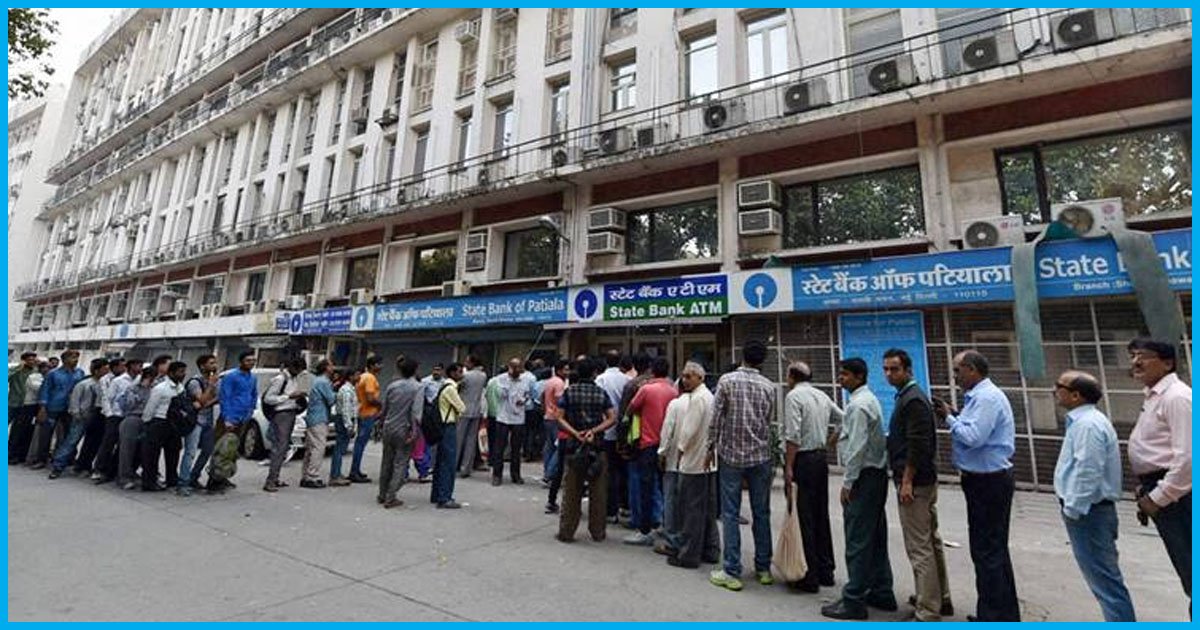
99% Demonetised Currency Back In System, Says RBI Report: Where Is The Black Money?
31 Aug 2017 8:31 AM GMT
Editor : Sudhanva Shetty Shetty
Writer, coffee-addict, likes folk music & long walks in the rain. Firmly believes that there's nothing more important in a democracy than a well-informed electorate.
The Reserve Bank of India’s (RBI) annual report has revealed, among other things, that almost all of the demonetised currency has found its way back to the central bank.
The central bank was criticised several times in the past for seemingly withholding information on how much black money was filtered from the system. Now, finally, its report is out. However, the RBI does caution that is still in the process of checking and verifying soiled and questionable bank notes.
“Subject to future corrections based on verification process when completed, the estimated value of SBNs received on June 30, 2017 is Rs 15.28 lakh crore,” the central bank states.
The entire report can be accessed here.
The notes that were demonetised on November 8, 2016, or the specified bank notes (SBNs), were worth Rs 15.45 lakh crore. This was the majority of the overall Rs 17.97 lakh crore that was in circulation during that period – meaning, 86% of India’s currency was rendered valueless overnight on November 8.
Prime Minister Narendra Modi, in his speech, said that the move was to curb black money, counterfeit currency and terror funding.
In the chaotic weeks following the announcement, with mounting deaths and outrage over poor handling by the government, the rhetoric was abruptly shifted to focus on digitisation of the economy and increasing the tax base.
Almost 99% of demonetised currency has returned to the central bank
The RBI report has now revealed that Rs 15.28 lakh crore of the demonetised Rs 15.45 lakh crore has been received as of June 30, 2017. 98.96% of all old notes have been returned.
This goes against the stand of the government, who depicted demonetisation as a decisive war against corruption and black money.
In November 2016, Attorney General Mukul Rohatgi had claimed that demonetisation would lead to about Rs 4 lakh crore not returning to the system. This unaccounted-for money, he said, would be “a straight write-off of the debt of the government of India”.
He had said, “There is roughly Rs 17 lakh crore rupees in circulation. Our estimate is that approximately Rs 11 to Rs 12 lakh crore will come back into the banking system through this scheme. Again, our assessment is that Rs 3 to Rs 4 lakh crore which doesn’t return is prima facie is the black component of the currency in circulation.”
However, in the months after demonetisation, the Finance Ministry repeatedly said that it had no estimates regarding the amount of black money in India (something the Prime Minister seemingly refuted in his Independence Day speech).
Percentage of counterfeit/fake currency less than 0.0013%
The RBI report says that only 89 million of the 6.7 billion demonetised Rs 1,000 notes were not deposited back to system.
“The value of banknotes in circulation declined by 20.2% over the year to Rs 13,102 billion as at end-March 2017. The volume of banknotes, however, increased by 11.1%, mainly due to higher infusion of banknotes of lower denomination in circulation following the demonetisation,” the RBI notes.
The report concludes that only 0.0007% of Rs 1,000 notes and 0.002% of old Rs 500 notes were found to be fake.
Additionally, the problem of counterfeit currency has not been solved as there have been several reports of counterfeit currency among the new denominations in the market. The old counterfeit currency has merely been replaced by new counterfeit currency.

Cost of printing new notes
The central bank also states that the total expenditure incurred on printing bank notes for the year July 2016- June 2017 was Rs 79.65 billion as opposed to Rs 34.2 billion during 2015-16.
“The upsurge in expenditure during the year was on account of change in the production plan of printing presses due to the introduction of new design notes in higher denominations as well as the requirement of larger volume of notes for replacement of the demonetised currency,” the report states.
RBI’s surplus lowered
Demonetisation-related costs have also lowered RBI’s surplus and its dividend to government.
Now, if that loss is made good through tax rather than non-tax revenue, those who would end up paying for the note ban’s demerits would be the taxpayers. Ironically, then, those hurt by demonetisation would not be black money hoarders but honest taxpayers.
In the year ended June 2017, the Reserve Bank of India (RBI) transferred just Rs 30,659 crore as dividend to the government. This is less than half the previous year’s level, which stood at Rs 65,876 crore. Partly due to demonetisation, it was expected that the gains will be as high as Rs 74,901, however, the same did not happen.
Additionally, the reserve money position fell by 13% for the first time since 1952, indicating a drop in the RBI’s seigniorage income (income earned through printing and managing currency). It remains to be seen if this decline in seigniorage income will persist, as digitisation will put cash need in the economy on a downward trajectory.
 All section
All section













